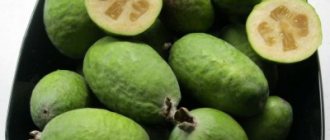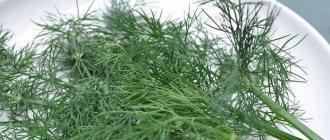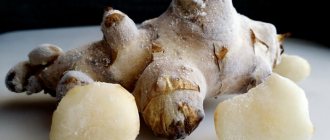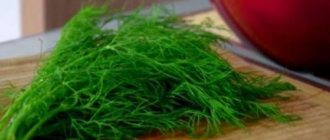Leaf lettuce is represented by dozens of varieties, each of which has unique organoleptic qualities and vitamin and mineral composition. However, all lettuce leaves without exception are extremely healthy. They are sold in supermarkets all year round, but are quite expensive. In the summer, this product is more accessible, and zealous housewives strive to prepare lettuce for the winter. This can be done in several ways, each of which has its own advantages.
Cooking features
- You need to collect the salad early in the morning, but after the dew has disappeared, otherwise it will spoil very quickly.
- Try not to overgrow the salad, as the large leaves of this plant have a pronounced bitter taste.
- When harvesting lettuce, the bushes are pulled out by the roots and placed vertically in a box (root down).
- Before cooking, the lettuce leaves are separated from the root, separated one at a time to make sure there are no slugs hiding between them, then washed and dried. Lettuce leaves must be dried thoroughly, since drops of water remaining on them can spoil not only the taste of the product, but also its safety. For better drying, the leaves are laid out on a towel or flannel, wrapped in cloth and lightly kneaded with your hands.
- The French believe that leaf lettuce becomes less tasty when it comes into contact with metal, so they often tear it rather than cut it before adding it to food. However, for winter preparations it can be either torn or cut. This is due to the fact that using a knife significantly speeds up the process of chopping the product. However, if you are harvesting a small amount of greens, the lettuce leaves can be torn rather than cut.
It is advisable to prepare salad leaves for the winter immediately after harvesting. Every day they lose 20-25% of the nutrients they contain. The sooner you utilize your harvest, the more useful your harvest will be.
Selection and preparation of raw materials
To preserve lettuce leaves for the winter, you need to follow a certain algorithm of actions. The first step towards preserving this useful plant will be its proper selection and initial preparation.
The collection of raw materials is carried out on a dry day, closer to noon. By this time, the dew on the leaves should have dried, so it will be easier to preserve.
It is better to dig up a rosette of lettuce directly with the root part. Since it is fastidious, when harvested this way it will not wilt too quickly and will give you extra time to preserve it for a long time.
Give preference only to juicy and elastic leaves of medium size. They should not be damaged or defective. To preserve the product for the winter, sift out yellowed and wilted leaves. It is also recommended to taste the salad. This is necessary in order to avoid tasteless bitter preparations.
When you get home, start processing immediately. Cut off the root part of the plant, place the leaves in a colander and rinse with cold water. This will help wash away any remaining soil and small insects. Once the water has drained, place the greens on a towel to absorb the moisture. You can also gently blot off any remaining liquid on top.
Is it possible to dry lettuce for the winter?
Is it possible to freeze lettuce?
Many housewives doubt whether it is possible to freeze lettuce. This is due to the fact that lettuce leaves are very tender; as a result of freezing, they soften. If they remain frozen for a long time after thawing, they can turn into a shapeless mass. Putting them on a dish to beautifully serve an appetizer to the table will not work. These greens are also not suitable for adding to a salad. However, with salad you can prepare omelettes, casseroles, soups, that is, dishes for which the beauty and integrity of lettuce leaves is not important. For them, frozen salad can be used quite well. Moreover, with this method of preparing for the winter, this product retains almost all its beneficial properties.
It turns out that you can freeze the salad for the winter, either with whole leaves or in chopped form. It can also be dried or pickled.
Collection
When harvesting in the garden, several rules should be taken into account:
- The lettuce must be plucked from the roots and then placed in a container in an upright position. A ventilated box will also work.
- Collection should be done early in the morning, after the dew has dried, when the sun is shining.
- You need fresh and strong medium-sized leaves.
If you take these rules into account, you will be able to preserve high-quality greens that will retain their valuable properties. Each method is convenient and does not take much time.
Frozen salad leaves for the winter
Compound:
- lettuce – 1 kg.
Cooking method:
- Tear the lettuce leaves from the root. Separate them and inspect them, remove slugs if any.
- Rinse the leaves and pat dry with a kitchen towel.
- Boil the water. Place a container filled with cold water nearby.
- Dip the lettuce leaves in boiling water for a minute, then immediately transfer them to a container of cold water. This is necessary so that the leaves retain their bright color.
- Place the lettuce leaves on a towel and let them dry.
- Stack the greens in clean, dry containers. In each of them you need to place as much greens as you can use at one time, since the product cannot be re-frozen.
Lettuce leaves frozen using this method can be stored in the freezer for up to 6 months.
Drying leaves
A simple method of storing greens is drying. Dehydration is carried out both in special devices and in the open air.
Process:
- To begin with, select a quality product.
- Roots and rough branches are cut off from suitable leaves.
- Rinse the greens thoroughly under running water.
- Drain the liquid and place the leaves on a paper or cloth towel until completely dry.
- The next step is drying. If there is no dehydrator, use the oven or place the vegetables on a flat surface, cover with gauze and leave them in the shade with access to fresh air.
- After drying, it is recommended to store it in airtight glass containers or paper bags.
It is better to take young, tender leaves. They will retain the taste without adding bitterness.
Shredded lettuce, frozen for winter
Compound:
- lettuce – 1 kg.
Cooking method:
- Prepare the lettuce leaves by washing and drying them.
- Cut the salad into small pieces.
- Grind the greens to a puree using a meat grinder or blender.
- Divide the salad into small zip-top bags. Close them, releasing excess air. Place in the freezer.
The shelf life of this vitamin preparation is six months. It can be added to soups and other dishes to enhance their benefits. This should be done shortly before the dish is ready to preserve the maximum beneficial properties of this additive.
Benefits of lettuce leaves
- Greens are rich in vitamins B, E, PP, minerals, ascorbic acid. It contains magnesium, potassium, iron.
- Leafy vegetables are low in calories.
- Normalize blood cholesterol levels.
Thanks to their rich composition, their use has gone beyond cooking. The product is gaining great popularity in cosmetology - masks, tonics, and lotions are made based on extracts.
The main thing is to wash the salad thoroughly before eating. It is best to do this in a solution of salt and soda to avoid intestinal infections.
See also: Vitamin salad: how to make a vitamin salad
Dried salad for the winter
Compound:
- lettuce – 0.2 kg.
Cooking method:
- Wash and dry the lettuce leaves. Select undamaged specimens.
- Arrange the lettuce leaves on a flat surface in a single layer. Cover with gauze. Leave in a warm, well-ventilated area until the leaves are so dry that they crumble when squeezed in your hand.
- To speed up the process of drying lettuce leaves, you can use a special device, following the instructions included with it, or an oven with a convection function. In the oven, the greens are dried at a minimum temperature so that they retain the maximum nutrients.
- Crush dried lettuce leaves in a mortar or grind with a coffee grinder.
- Place the dried herbs into a clean, dry jar and close it tightly.
Store dried lettuce in a cool place, away from light, and add it to dishes instead of seasoning.
Storage rules
To preserve lettuce throughout the winter, it is important to follow the following rules:
- Thawed product cannot be re-frozen.
- The salad is frozen in portions, and the container is marked (signed) for ease of identification.
- Marinades and preserved salad are also stored in a cool place. In warm conditions it quickly deteriorates.
The most important rule for a refrigerated product is not to break the “cold chain” rule.
You can learn more useful tips on how to preserve green leaf lettuce by watching the following video:
Fried salad for the winter
Composition (per 0.5 l):
- lettuce – 0.5 kg;
- refined vegetable oil – 100 l;
- salt – 5 g;
- table vinegar (9 percent) – 40 ml;
- garlic - 1 head.
Cooking method:
- Wash and sterilize small jars and their metal lids.
- Sort through the salad. Wash the leaves and dry them well.
- Tear the lettuce leaves or cut them into strips, not too narrow.
- Peel the garlic cloves and cut into slices.
- Place the chopped lettuce leaves in a bowl, sprinkle with coarse salt, stir, and leave for a quarter of an hour.
- Drain off the released liquid so that the salad is not over-salted. If you plan to use the herbs as a seasoning, you don't have to drain the brine.
- Heat the oil in a deep frying pan. Place the garlic slices in it and fry them for 2 minutes.
- Place the salad in the pan. Fry it for 5 minutes along with the garlic. A minute before cooking, add vinegar.
- Divide the salad into prepared jars. Pour in the oil in which it was fried.
- Roll up the jars. Wait for them to cool to room temperature.
Method 3. Marinate
Pickling is one of the most delicious ways to store salad. Here, much attention is paid to the marinade, which improves the taste of the salad, emphasizing its characteristics.
For the marinade you will need:
- several liters of water;
- salt;
- sugar;
- lemon acid;
- vegetable oil.
Lettuce leaves should be placed in a spacious container so that the greens are completely immersed in the marinade.
In the photo, the container is not deep enough . Procedure:
- Place a layer of lettuce leaves in a deep and spacious container.
- Pour the prepared marinade over each layer.
- To remove bitterness and add piquancy, add bay leaf, garlic and allspice.
1 month
shelf life of pickled lettuce leaves
- Place the leaves under pressure - place something heavy on top.
- Place the container in the refrigerator.
Shelf life - 1 month.
If you fry the salad in sunflower oil before marinating, pour marinade over it and roll it into jars, then the shelf life of such preparation can be extended to six months
Marinated salad for the winter
Composition (per 1 l):
- lard leaves – 0.5 kg;
- fresh dill – 100 g;
- celery greens – 100 g;
- garlic – 5 cloves;
- water – 1 l;
- salt – 10 g;
- laurel leaves – 2 pcs.;
- black peppercorns – 5 pcs.;
- citric acid – 1 g;
- sugar – 40 g.
Cooking method:
- Wash and dry the greens.
- Peel and cut the garlic into slices.
- Wash and sterilize the jars, boil the lids.
- Place celery leaves and garlic cloves in the bottom of the jars. Then place lettuce leaves in the jars. Place dill on top.
- Boil water, add salt, sugar, bay leaves, pepper and citric acid. Boil the marinade for 5 minutes, pour it over the greens.
- Roll up the jars, place them bottoms up, cover with a warm blanket and leave for 12 hours. Cooling in a steam bath, canned food undergoes additional sterilization, which increases its resistance to unfavorable storage conditions.
After cooling, the workpiece can be stored in a cellar or other cool place. These canned foods should be stored at a temperature of 10-18 degrees, then they will not spoil for at least 9 months.
Date: 07/21/2020.
Marinating with spices
Salad marinated according to this recipe acquires a richer taste and aroma. These qualities can be changed by choosing different seasonings.
In the classic version, for 500 g of leaves take:
- 30 g chopped garlic;
- 20 g each of dill and celery.
The marinade is prepared from the following components:
- 1 liter of water;
- 2 tbsp. l. Sahara;
- ½ tbsp. salt;
- 6 peas of allspice;
- ⅓ tsp. citric acid;
- 3 bay leaves.
The indicated ingredients are placed alternately in an enamel pan - first lettuce leaves, then chopped celery and garlic, lettuce again, then dill, then lettuce on top. To prepare the marinade, bring the water to a boil, add all the ingredients, boil again and pour into a pan with herbs. Cover with a plate of slightly smaller diameter so that the leaves do not float. For short-term storage, the product is left in the pan. To preserve for the winter, transfer to a jar and seal. In both cases, store in the refrigerator.
Related article:
Unusual jam: 4 original recipes that are worth paying attention to
Fragrant herbal teas. We collect the leaves and store them until winter!
Teas made from lemon balm and mint are still especially popular. But as we told you yesterday, you can use the leaves of almost any garden plant to make delicious aromatic tea. Such teas not only have a pleasant taste, but also some medicinal properties.
Probably, many of us in the summer even try to add leaves from our own garden to regular tea: strawberries, currants and others. This is great for summer. But you also want to feel the aromas of herbs in your home in winter. Some methods of preparing tea will help us with this.
Many people try to dry the leaves in the usual way on a piece of newspaper in the shade, in a ventilated area. But such leaves, unfortunately, are not as tasty and aromatic as fresh ones.
Fermentation will help preserve all the beneficial properties of the leaves and make them more aromatic.
How to Ferment Leaves for Winter Teas
The purpose of fermentation is to extract juice from the leaf. After this, the leaves oxidize and the fermentation process occurs (like bread). And then the leaves are dried so that the tea can be stored for a long time.
How to collect cherry, pear, apple and chokeberry leaves? Hold the branch at the base and pull the leaves toward you. It is necessary to remove only part of the leaves so as not to make the branch bare (this is in the spring). In autumn, you can remove all the leaves. We tear off the strawberry leaves without cuttings.
As we have already said, you can collect leaves all season long. Spring tea turns out to be delicate, with a delicate aroma. And tea made from autumn leaves is very bright in aroma and color.
Stages of harvesting fruit tree leaves
- Withering . Scatter the collected leaves in the shade (on natural fabric) in a layer of 3-5 cm. This process takes 4-8 hours. The leaves need to be stirred periodically.
- We make granules. The leaves need to be ground in a meat grinder. Place them in a plastic bucket or deep pan. Press down the mass.
- Fermentation . Cover the container with a damp cloth (cotton or linen). The process lasts 6-8 hours. You need to periodically ensure that the fabric does not dry out. During fermentation, the aroma of the leaves will increase. You need to wait for the strongest smell. This completes the fermentation stage.
- Drying . Sprinkle the tea onto the leaf. And put in the oven at 100 degrees for 1-1.5 hours. Then we continue drying at 50 degrees. Do not overdry, otherwise the aroma will disappear.
We prepare raspberry and currant leaves for tea a little differently
1. After assembly, they need to be frozen in plastic bags for a couple of hours. Remove from the freezer, defrost for 20 minutes, and, stacking several leaves, roll up the rolls.
2. Fermentation. Place the rolls in a bucket and cover with a cloth for 5 hours. If the juice is not released well, you need to put something heavy on the leaves (for example, a plate with a stone on it)
3. Cut the rolls into 0.5 cm pieces.
4. You need to dry it in the oven at 80 degrees. After 1 hour, reduce the temperature to 50 degrees.
After drying, pour all the teas into cotton bags. Label and hang in a dry place to finish drying.
In winter, you and your loved ones will receive unforgettable pleasure from aromatic teas. You can mix it in different ways, each time getting an original taste and aroma.
Enjoy your tea!
Sources: hlebopechka.ru, slavyanskaya-kultura.ru, nashdom.co.nz, vk.com, ladychef.ru, www.hint4.me
Storing green vegetables in the freezer
Almost all green vegetables can be stored in the freezer during the winter, defrosting them immediately before use.
Before freezing, the salad must be prepared as described above and blanched. Blanching allows you to preserve the nutritional components of greens, their flavor and bright color. Place the salad in boiling water for a couple of minutes, then remove and rinse with ice water. Cold water will stop the cooking process of the leaves. Lay them out on the table and let them dry. After this, you need to put them in bags, tie them tightly and put them in the freezer.
It makes sense to store green leaves as a puree, since often after defrosting they turn into an unappetizing mass. To do this, twist the leaves, put them in bags and freeze. You can freeze the leaves in plastic containers with a lid.
Freeze enough salad for one use in one bag or container. Vegetables cannot be re-frozen.
Another interesting way to freeze lettuce leaves. Place the finely chopped salad in ice trays, add boiled water and place in the freezer. After the water has hardened, transfer the resulting cubes with herbs into bags and put them back in the freezer. In this way you can freeze not only lettuce, but also dill, parsley and other green vegetables. And they will be stored for up to two years, and even their smell remains after thawing.











